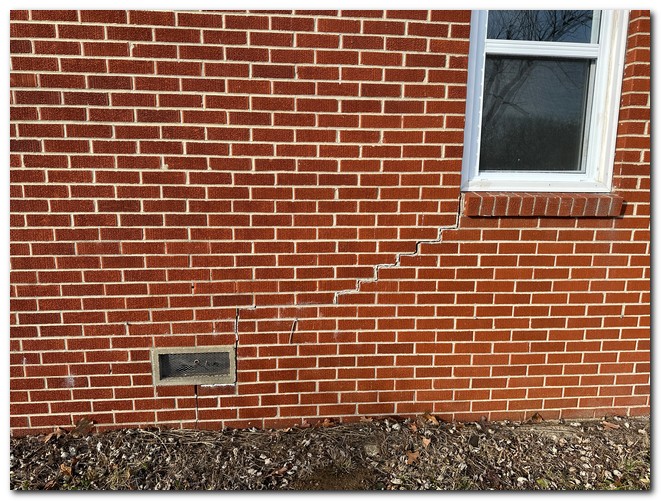I had a call to look at a 60 year house on a crawlspace. The buyer had a home inspection and wanted a structural inspection due to cracks in the brick veneer and sagging floors inside. The cracked brick veneer and the floor sagging turned out to be two separate issues. There were some minor stair-stepped mortar joint cracks in photo1, but nothing major. The top of the footing was at ground level in photo 2 and susceptible to changes in soil moisture, so no big issue there. The remodeling on the inside was typical with new paint, flooring and appliances, photo3. The interior floors had some dips that were quickly found with my trusty golf ball. On a hard surfaced floor a golf ball will find the low spots faster then you can get the level out of my truck. I followed up with mi ZipLevel to get some actual numbers and some dips were in the 1-3/4" range, photo 4. Finally I crawled under in this tight crawlspace, where someone had been there installing new PEX water lines. The last photo shows a portion of the broken floor joists due to dry rot damage. Probably 95% of all the floor sags I have investigated fall in four categories: poor framing techniques, old/undersized framing, termite damage and dry rot. Caveat Emptor
8 Likes
So the question of the day is, how did the HI not see this, lol?
Those joists seem to be split at the nail heads… not seeing much dry rot(?) They could have been simply over-loaded and failed at the weakest point, older wood being more brittle. That is why we use joist hangers nowadays.
You sure it is a brick veneer – not seeing weep holes(?)
Probably where they dropped or stacked the bundles of flooring during the flip.
1 Like
Brick veneer, no weep holes. Definitely dry rot, you might be able to see the blockly wood fibers in this larger photo.
Nice catch looks like great material for a blog, a presentation or fodder for original marketing material… good job.





